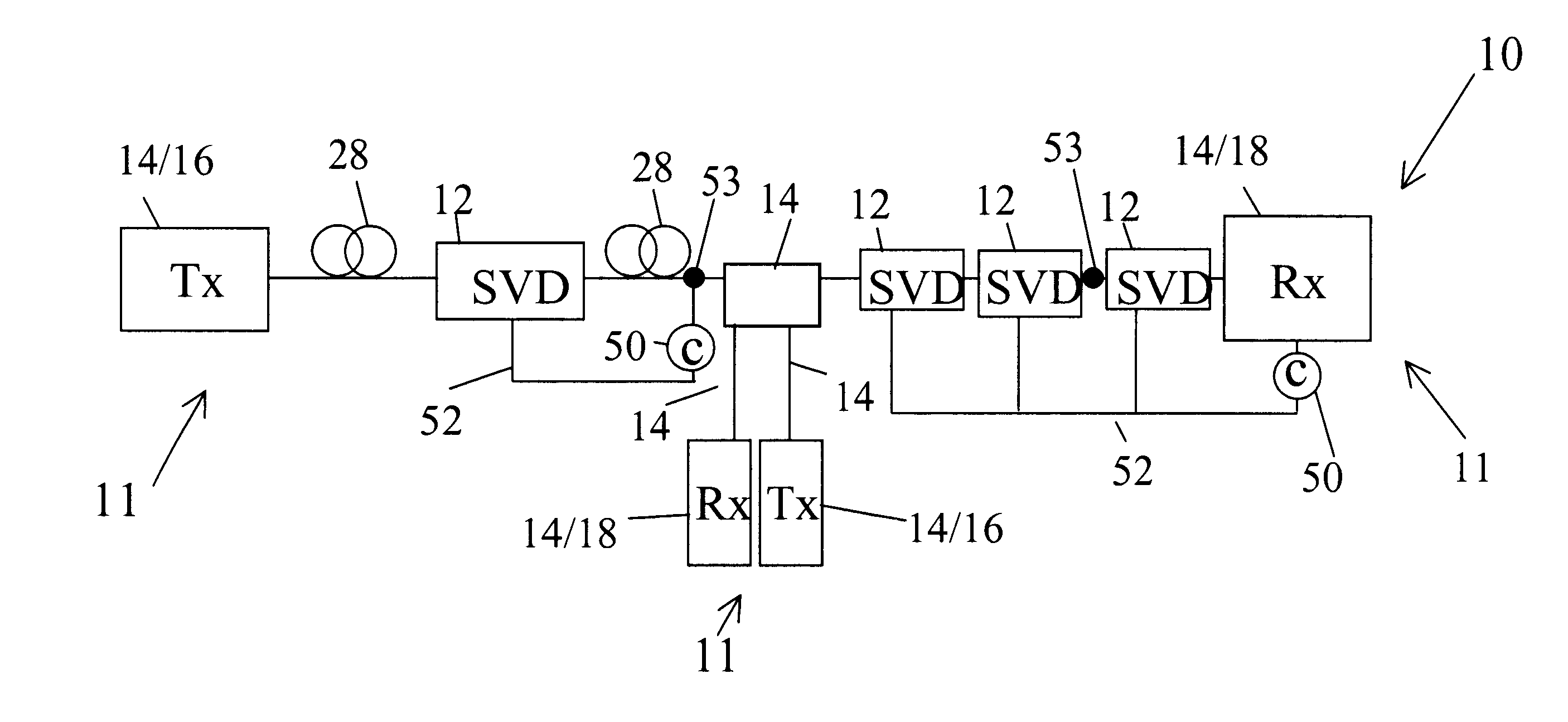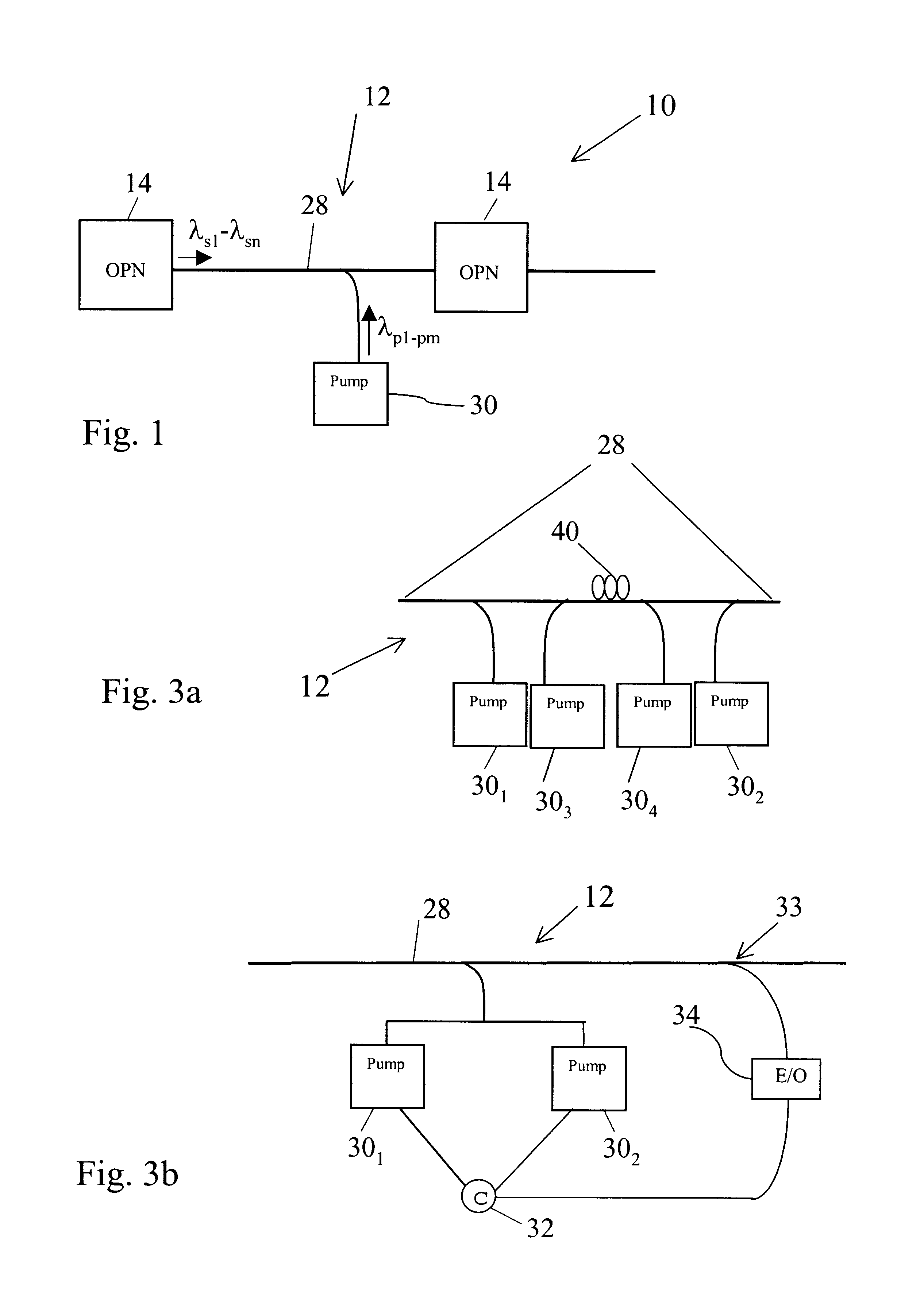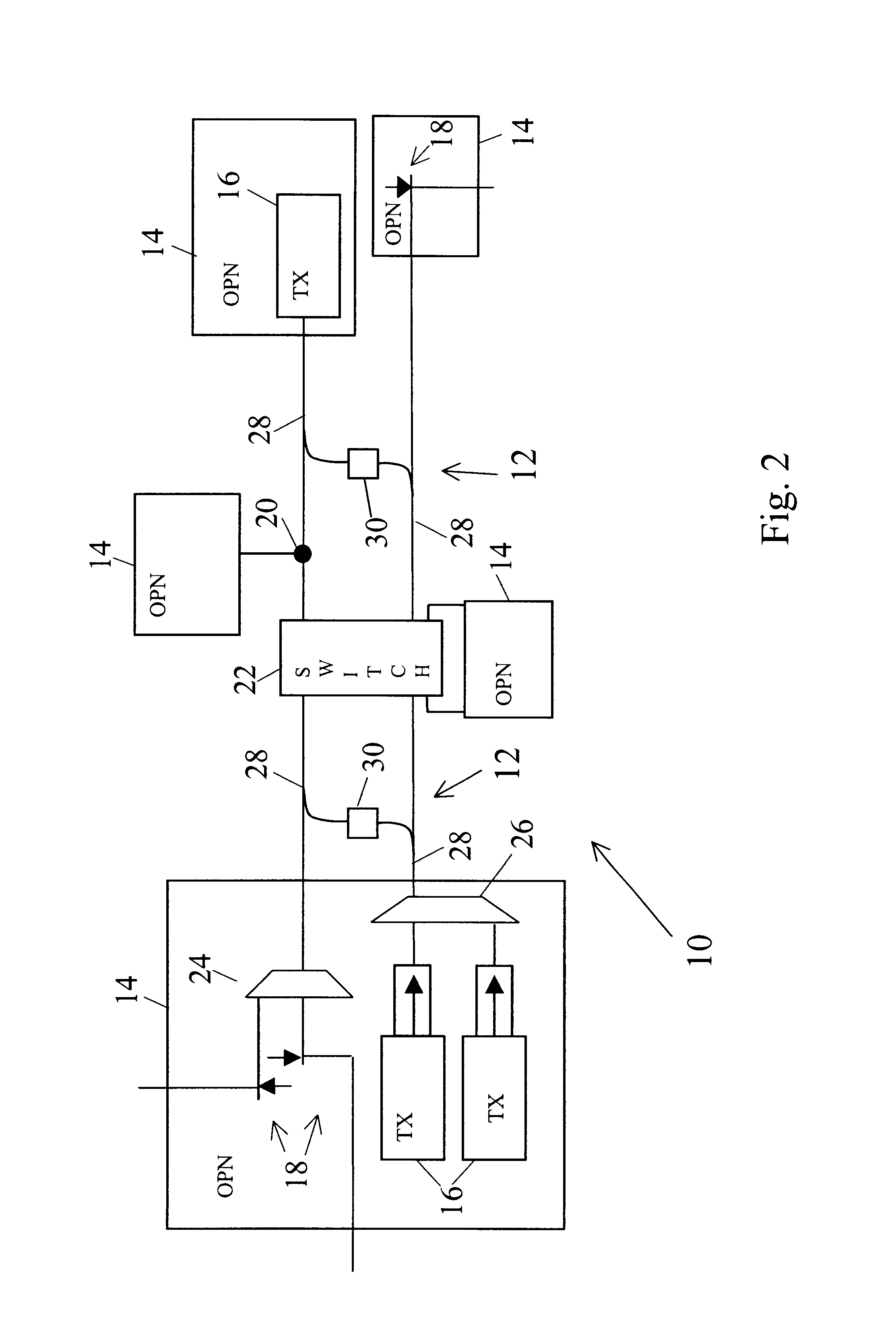Optical signal varying devices, systems and methods
a technology of optical signal and optical transmission system, applied in the field of optical transmission system, devices, and methods, can solve the problems of high cost of electrical signal regeneration/amplification equipment, attenuation of some signals, signal loss or distortion, etc., and achieve high gain signal, high loss, and flexible system operation
- Summary
- Abstract
- Description
- Claims
- Application Information
AI Technical Summary
Benefits of technology
Problems solved by technology
Method used
Image
Examples
Embodiment Construction
FIGS. 1 and 2 show embodiments of optical systems 10 in which signal varying devices 12 are optically connected between optical processing nodes 14. The system 10 can be embodied, for example, as one or more point to point links, as one or more rings, as a mesh architecture, or in one or more other system 10 architectures.
The optical processing nodes 14 can include one or more optical processing devices, such as transmitters 16, receivers 18, add and / or drop ports 20, switches 22, signal splitters 24 and combiners 26, or other signal processing devices. The optical processing nodes 14 generally include at least one transmitter 16 for transmitting optical signals in at least one information carrying wavelength to at least one optical signal receiver 18 located in another processing node 14. The transmitters 16 can include one or more light sources or emitters, such as lasers, incoherent sources, or other sources to provide optical channel power. Likewise, the receivers 18 can employ ...
PUM
 Login to View More
Login to View More Abstract
Description
Claims
Application Information
 Login to View More
Login to View More - R&D
- Intellectual Property
- Life Sciences
- Materials
- Tech Scout
- Unparalleled Data Quality
- Higher Quality Content
- 60% Fewer Hallucinations
Browse by: Latest US Patents, China's latest patents, Technical Efficacy Thesaurus, Application Domain, Technology Topic, Popular Technical Reports.
© 2025 PatSnap. All rights reserved.Legal|Privacy policy|Modern Slavery Act Transparency Statement|Sitemap|About US| Contact US: help@patsnap.com



